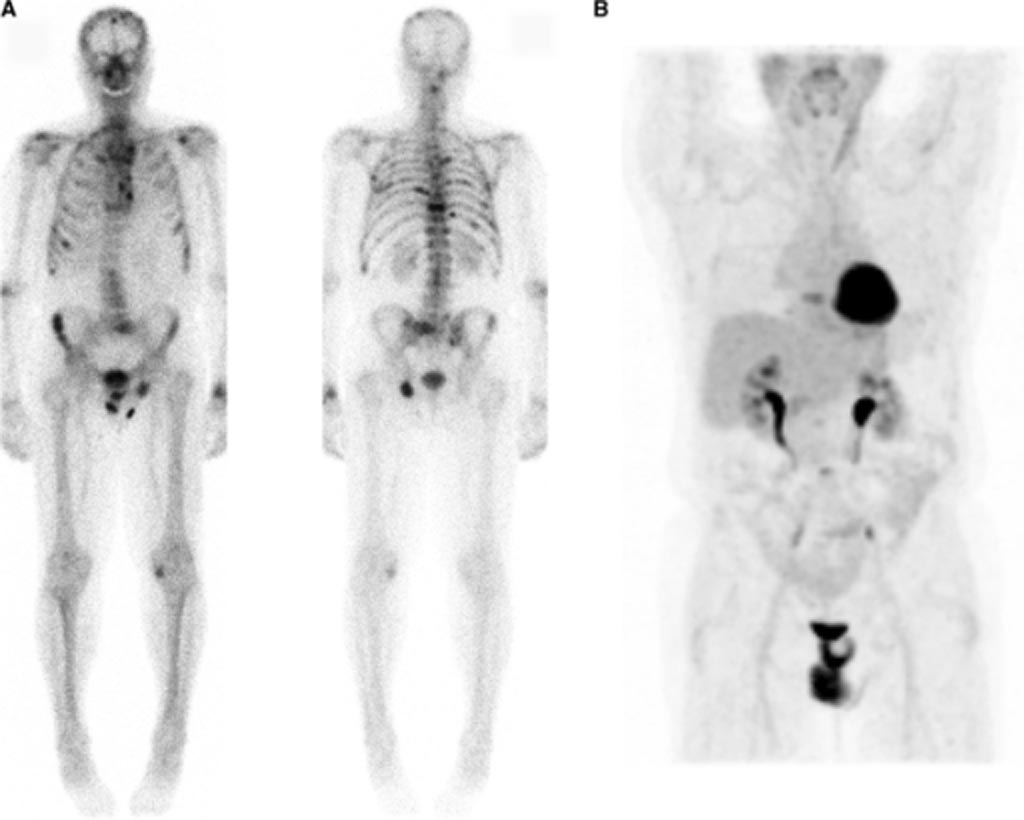PET Tracer Identifies Estrogen Receptor Expression
By MedImaging International staff writers
Posted on 22 Aug 2018
A new study demonstrates how positron emission tomography (PET) can be used to identify differences in estrogen receptor (ER) expression, helping to guide treatment of metastatic breast cancer.Posted on 22 Aug 2018
Researchers at University Medical Center Groningen (UMCG; The Netherlands) and University Medical Center Utrecht (UMCU; The Netherlands) conducted a study in 91 patients with metastatic breast cancer, using fluorine-18-fluoroestradiol (18F-FES) PET imaging in order to assess ER expression heterogeneity in 1,617 metastases (78% in bone, 15% in the lymph nodes, and 4% in the lung), as well as in normal tissue. Liver lesions were excluded, given the high background liver signal.

Image: PET imaging can detect breast cancer metastases spread throughout the body (Photo courtesy of NIH).
The results revealed that approximately 50% of the patients had one or more ER negative lesions, while the primary tumor was ER positive. Median tumor uptake varied greatly between patients. 18F-FES uptake in bone metastases was higher than in lymph node and lung metastases. Background 18F-FES uptake in the normal tissue surrounding each organ was also found to vary per organ, with uptake highest in the skeleton. In all, three distinct patterns of ER positive metastatic breast cancer spread were identified. The study was published in the August 2018 issue of The Journal of Nuclear Medicine.
“ER negative lesions will not respond to endocrine treatment, but other ER positive lesions may. The knowledge of this heterogeneity by means of 18F-FES PET may support future specific treatment of metastasis,” concluded senior author Professor Geke Hospers, MD, PhD, of UMCG, and colleagues. “For example, one ER negative lesion could be treated by radiotherapy, while the endocrine treatment is continued for the other ER positive lesions. Our analysis might be useful for future stratification in intervention studies and optimizing personalized treatment.”
PET is a nuclear medicine imaging technique that produces a 3D image of functional processes in the body. The system detects pairs of gamma rays emitted indirectly by a positron-emitting radionuclide tracer. Tracer concentrations within the body are then constructed in 3D by computer analysis. In modern PET-CT scanners, 3D imaging is often accomplished with the aid of a CT X-ray scan performed on the patient during the same session, in the same machine.
Related Links:
University Medical Center Groningen
University Medical Center Utrecht














